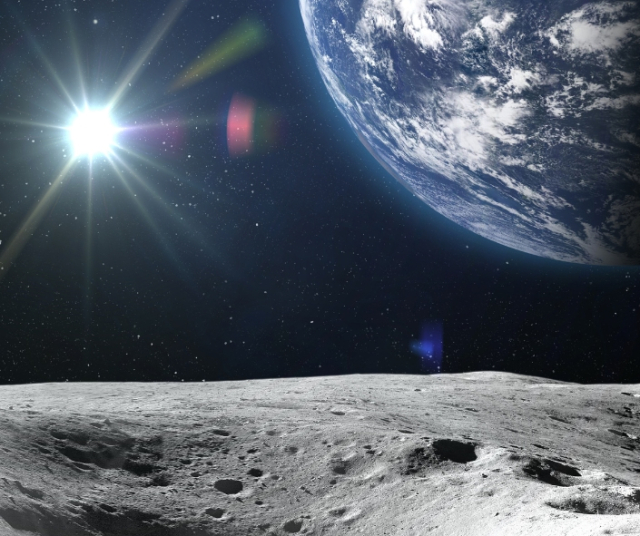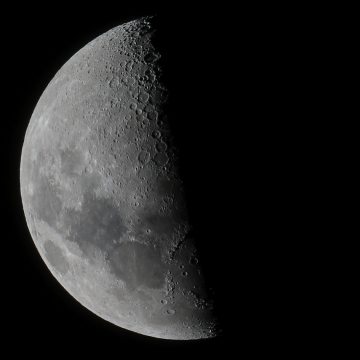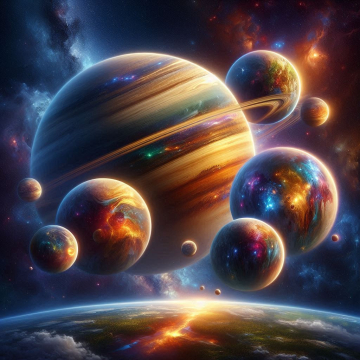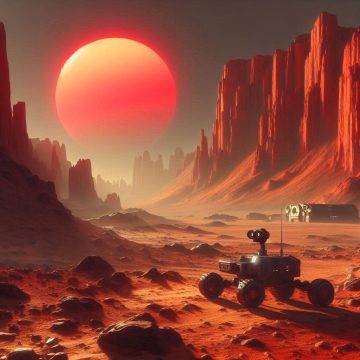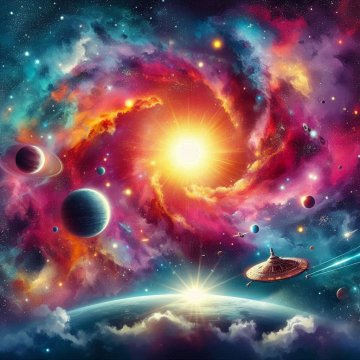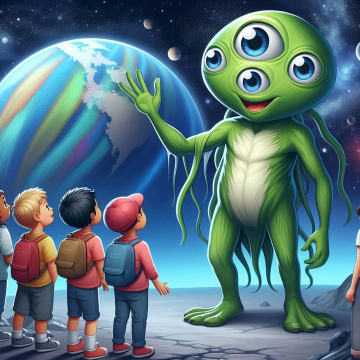The Moon, that celestial body that has captured humanity's imagination for millennia, remains an object of fascination and study. Throughout history, the Moon has influenced myths, legends, poetry and, more recently, science. In this article, we embark on a detailed journey to explore the characteristics of our natural satellite, from its composition and phases to its mysterious craters and its influence on Earth.
Lunar Composition: The Rock That Accompanies Us.
The Moon, despite its silvery glow in the night sky, is essentially a rocky, lifeless world. Its composition, mainly silicates and metal oxides, is similar to the Earth's crust, but with notable differences. The lack of atmosphere and water on the Moon contributes to the preservation of its surface, leaving it marked by craters and rocks.
The region most visible from Earth, known as the "lunar sea" or "seas of the Moon," is largely composed of basalts, igneous rocks formed from past volcanic activity. These seas, like the famous Sea of Tranquility, offer a dark contrast to the brighter, more cratered highlands.
Moon Phases: A Celestial Dance of Light and Shadow.
Lunar phases are one of the best-known phenomena associated with the Moon and result from the interaction between the relative position of the Moon, the Earth and the Sun. The Moon goes through a complete cycle of phases, starting with the new Moon, where it does not It is visible from Earth, until the full Moon, when its illuminated side is completely visible.
This lunar cycle, which lasts approximately 29.5 days, has inspired poetry, art, and rituals throughout human history. The lunar light, so soft and mysterious, has served as a guide for nocturnal travelers and as a source of inspiration for countless myths and legends.
Lunar Craters: Traces of Cosmic Collisions.
The lunar surface is dotted with craters, visible marks of asteroid and comet impacts over eons. Lacking a significant atmosphere, the Moon does not have the protection from impacts that Earth enjoys. Each crater tells a story of cosmic collisions, leaving their mark on the lunar topography.
Some of the most notable craters include Tycho Crater, with its bright rays extending outward, and Copernicus Crater, with its impressive central formation. These craters provide scientists with clues about the geological history of the Moon and the frequency of impacts over time.
Lunar Polar Regions: Hostels of Frozen Mysteries.
In the polar regions of the Moon, particularly near the north and south poles, there are areas of perpetual shadow where the sun never shines directly. These areas are fascinating to scientists because they could harbor water ice. The lack of atmosphere on the Moon means that the surface does not retain heat, making these areas in extreme shadow cold enough to support ice.
The presence of water on the Moon is a significant discovery, as it could be key to future space missions and the construction of lunar bases. Furthermore, the study of these polar regions offers a unique window into the Moon's past and the possibility of unraveling its geological mysteries.
Tidal Effects: Cosmic Dance of Two Celestial Bodies.
The Moon, although small compared to Earth, has a significant impact on our planet through tidal effects. The Moon's gravity causes tides on Earth, a phenomenon that has influenced life on Earth and human navigation throughout history.
The cosmic dance of the Earth and Moon, with its resulting tides, is a visible manifestation of the gravitational forces that govern our solar system. Studies on tides have also contributed to the understanding of the internal structure of the Earth and other celestial bodies.
Lunar Missions: A Giant Step for Humanity.
The Moon has been the target of numerous space missions, from NASA's Apollo missions to more recent robotic exploration missions. The Apollo missions took the first humans to the Moon in the 1960s and 1970s, marking a historic milestone in space exploration.
More recently, missions from space agencies and private companies have continued to explore the Moon. The search for water, research into lunar geology and preparation for future manned missions are some of the objectives of these missions. The Moon, once again, is at the center of human efforts to understand the cosmos and expand our horizons.
The Cultural Influence of the Moon: Muse and Night Guide.
The Moon has not only been an object of scientific study, but also a muse for artists and writers throughout history. From romantic poetry to ancient mythology, the Moon has played a prominent role in human creativity.
In many cultures, the Moon has been personified as a deity or has been associated with goddesses and gods. Its soft, changing light has inspired works of art, songs and legends that have endured through the centuries. Even today, the Moon remains a source of inspiration for writers, filmmakers and artists seeking to capture its mysterious beauty.
Despite being the closest celestial object to Earth, the Moon remains a celestial body full of mysteries and fascination. From its rocky composition to its craters marked by cosmic impacts, the Moon offers a unique window into the solar system's past and the history of our own planet.
Current and future space missions promise to unravel more of the Moon's secrets, revealing its geological mysteries and potentially paving the way for future human exploration and settlement. As humanity looks toward the night sky, the Moon remains a beacon of inspiration and discovery, reminding us that, even in our closest cosmic neighborhood, there is always more to explore and learn.
